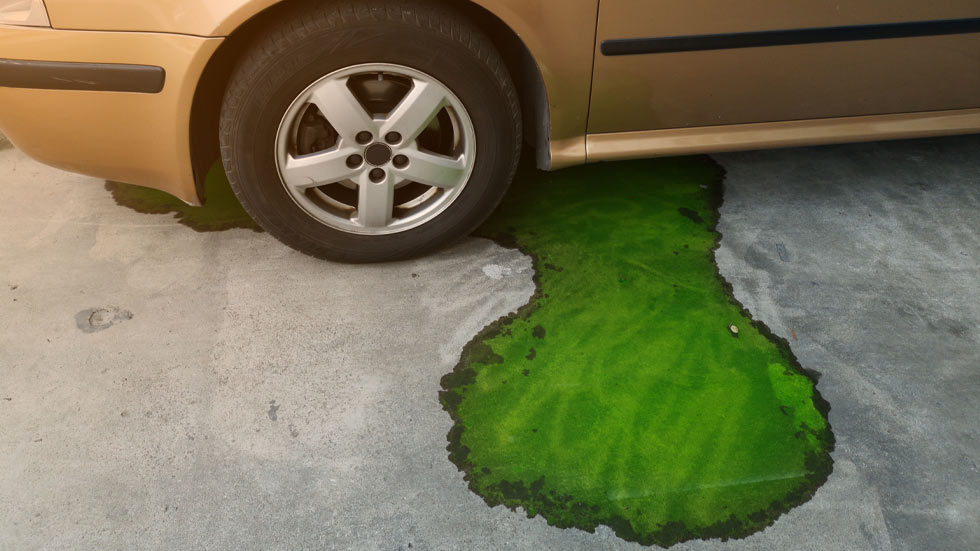

Your engine’s coolant, or antifreeze, is an essential component that helps regulate its temperature. Not only does coolant protect the vehicle engine from freezing temps during winter weather, but it also keeps things from overheating as your motor burns fuel and generates friction. Without the protection of your coolant and radiator, heat would overwhelm everything inside your motor and it would grind to a halt fairly quickly.
Coolant is mixed with water (usually 50/50) and put into your radiator. From here, it circulates through your running engine, pulling heat away and keeping all its internal components moving within optimal operating temperatures. The coolant cycles through the radiator through a pressurized system of hoses, so if any of these components spring a leak or quit working, this can cause heat to build up in your vehicle’s engine, leading to significant damage if not addressed quickly.

In this article we’re going to take a closer look at coolant, what it does, and how to tell if your vehicle has a coolant leak.
HOW TO FIND A COOLANT LEAK
There are several telltale signs that you may have a coolant leak and more than a few potential causes. You may notice your vehicle seems hotter than usual, is making strange noises, or its performance seems reduced, just to name a few. If you’ve noticed any of the following symptoms, you may have a coolant leak.
- Puddles Under Your Vehicle – The clearest sign that you’ve got a coolant leak will be a puddle underneath your vehicle’s engine compartment. Coolant manufacturers add dyes to their fluids so they’re more easily identified. Motor oil is usually gold or dark brown, transmission fluid red, and condensation from your air conditioning drips clear water. Coolant, on the other hand, will appear blue, lime green, orange, and sometimes pink.
- Overheating Engine – If your engine begins to overheat regularly or you notice its temperature quickly moving upward, this could be an indication you have a coolant leak. Another cause could be that a component within your radiator, like the thermostat, has quit working. If your vehicle begins overheating and you haven’t seen puddles of coolant or any indication of a leak, then you may have an issue limiting the flow of fresh coolant into your engine.
- Sweet Smell – If you notice an odd, sweet smell after shutting off your engine, this could be an indication that coolant is leaking onto hot components inside your vehicle and giving off a sweet smell as they burn.

If you’re wondering how to fix a coolant leak, it’s always a good idea to consult a mechanic as quickly as possible. Your engine generates tremendous amounts of heat. Failure to keep it cool and within a safe operating temperature can result in catastrophic damage that’s impossible to repair.
Always be safe when inspecting your vehicle’s coolant and never remove a radiator cap or open your coolant system while the vehicle is hot. Turn off your vehicle and give it at least 40 minutes to cool down before attempting to open the radiator and, when in doubt, contact a trusted mechanic for help.
